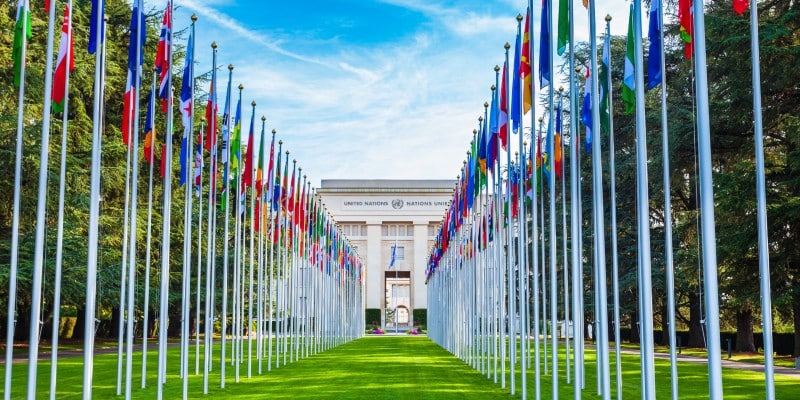Although the UN General Assembly meetings began with bitter political sparring between countries such as the United States and China, many world leaders are taking this opportunity to sound the alarm on the untold suffering the COVID-19 pandemic has caused and the looming crisis coming from climate change.
Africa, for instance, is set to enter its first recession in 25 years and multilateral organizations are scrambling to support economic recovery. A UN study estimates that 45 million people in Latin America might fall into poverty, and in Asia the number might reach 160 million. The latest Goalkeepers Report published by the Bill and Melinda Gates Foundation summarized the crisis succinctly, noting that the world has “been set back about 25 years in about 25 weeks.” As world leaders look to rebuild a fairer world, it’s important to ask two questions: how did we get here, and how can we rebuild better?
How did we get here?
Over the past four decades the world has made some progress as more than one billion people have escaped extreme poverty (living on less than $2 a day). While this is cause for celebration, it’s important to note that around half the world’s population still lives on less than $5.50 a day, leaving them dangerously close to sliding back into it. Most people who live on less than $5.50 a day don’t have access to decent housing, good jobs with benefits, or a social safety net in case a catastrophic event happens. Unfortunately, in 2020 that catastrophic event did happen.
One of the reasons it has been so easy to set global development back is because too many anti-poverty programs have focused on fixing symptoms of poverty and not the root cause. For example, when governments and large international NGOs try to fix institutions and law enforcement in poor countries without truly understanding the underlying mechanisms of what makes inclusive institutions stick, they fail. Harvard University professor Matt Andrews, has written extensively about this phenomenon, yet many governments and multilateral institutions continue to invest billions of dollars in institutional reform programs.
That’s just one example but many abound. When infrastructure is deficient, governments fund infrastructure projects without considering their sustainability. This often leads to mega projects that are over budget, delayed, and under deliver on their promise of economic development. Similarly, small nonprofits that build wells in poor communities and programs that dole out cash to those living in poverty do little to sow the seeds of lasting prosperity since they don’t have embedded in them a mechanism to ensure sustainability. In due time, the chickens will come home to roost. The wells will break down and the cash will run out. On the surface the world may seem like it’s making substantial progress against poverty, but in reality, it isn’t. These programs are simply treating its symptoms—placing Band-Aids rather than addressing the root cause. When a health and economic crisis like the COVID-19 pandemic rears its ugly head in our economies, those Band-Aids are ripped right off.
How can we rebuild better?
In our research we’ve discovered that the critical missing link in the economic development discourse is innovation, and more specifically, market-creating innovations. These innovations offer a powerful and sustainable solution to development by transforming complicated and expensive products into simple and affordable ones so many more people in society can access them. Because they address problems people desperately need solved, consumers have a vested interest in ensuring the markets endure. Examples of market-creating innovations in emerging economies are the proliferation of inexpensive mobile phones, low-cost flooring, economical financial services, and affordable food for millions of people.
As innovators create new markets, they necessarily pull in the resources and build the infrastructure to deliver their products to market, strengthening local economies in the process. And because they serve new populations of people, they need to hire many people to make, market, distribute, and sell their products. This not only creates much needed jobs, but also generates new sources of taxes for governments. For example, in Africa, the world’s poorest continent, the proliferation of affordable mobile phones supports around three million jobs and generates billions of dollars in taxes annually. In this model, more permanent jobs provide income that can replace cash transfer programs, and increased tax revenues can be used to provide public services such as water, replacing unsustainable nonprofit water wells. This is the power of market-creating innovation.
As world leaders reflect on this year’s UN General Assembly meetings, it will be important to consider how doing more of the same will not help poor countries emerge stronger from this devastating pandemic. Instead of continuing to offer short-term solutions—a strategy that has not created resilience or lasting prosperity—a better model is to foster market-creating innovations in these economies.



